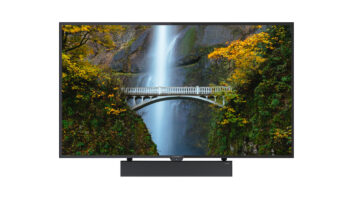Despite the freefall in HDTV pricing between Black Friday and the kickoff at Super Bowl XLI, attachment rates of extended warranties remained relatively robust through the holiday season. How did dealers and their extended service providers (ESPs) pull that off? According to the leading ESPs, tiered plans allowed contract pricing to fall in concert with TV tickets, maintaining traditional price-value ratios. And even in this era of sub-$1,000 plasma displays, they argue, consumers still want to protect their investments and get immediate help with a malfunction.
“The decline of HDTV prices, particularly in the flat-panel category, has been coming for some time,” said Frank Trigo, executive VP of Bankers Warranty Group (BWG), which has formally assumed the business of the former VAC Service Corp. “Many of our clients expected the price drops and had asked us to review our price bands and ESP SKU pricing to accommodate the expected decline.”
BWG managed to maintain its attachment rates thanks in part to its up-market clientele. “Despite the fact that we sell a significant volume of ESP’s on flat-panel sets, our current client base is comprised of high-end specialty dealers and custom home theater retailers whose core volume is driven by the higher-end product,” Trigo said.
Matt Frankel, division president of AIG Warranty, echoed his observation. “We knew the price cuts were coming — it wasn’t a surprise. We were right on with our price banding strategy, which provided a lower price band to match the lower TV prices in order to maintain the price-value relationship. As a result, attachment rates didn’t suffer.”
What’s more, Frankel noted, “Even though prices have come down dramatically, flat panel is still a new technology for most consumers, and $1,000 is still a lot of money for them, so they still want to protect their investment.”
The situation was similar for The Warranty Group, which was spun off by Aon last fall. “We always had a tiered pricing structure, so as TV prices dropped consumers were just presented with the appropriate tier,” said Mike Frosch, president. “The value proposition remains the same for consumers, and the gross margin rate stays the same for retailers, although at a smaller price point. But I think retailers are more concerned with $1,000 price declines on HDTVs than $50 price drops on warranty plans.”
Frosch added that a side benefit of lower TVs prices is that “consumers can now afford to step up to home theater systems, which we can provide coverage for with our whole home plans.”
Similarly, Warrantech Consumer Product Services “didn’t experience an attachment decline in December. Really just the opposite,” said president Sean Hicks. “We have sold LCDs and plasmas in price tiers, so the warranty price dropped with the price of the television.
“We have been preparing for just this type of pricing pressure by investing more in technology, allowing dealers and customers more self-servicing opportunities while still having the necessary controls in place to control losses,” Hicks said. “A prime example is our WCPSOnline tool used by service companies to create repair orders and submit claims. In the near future we will deploy more interactive voice response technology to further reduce our internal costs.”
Keith Meier, senior VP and general manager of the extended service division at Assurant Solutions, said that across the industry “the decline in HDTV retail prices has had a positive impact on demand, increasing the volume of product sold. Most of our clients reported their most successful holiday season yet.”
To help maintain attachment rates, which “typically decrease slightly during the holiday season because sales associates are often too busy to make the offer,” Assurant has assumed a two-pronged approach. “First, partnering with our clients, we developed a process to evaluate pricing and establish the appropriate price tiers based on their product mix,” Meier said. “The evaluation ensured that the ratio between ESC [extended service contract] price and product price remained appropriate.
“Second, we placed an increased focus on Total Program Management, our comprehensive sales, marketing and training approach that results in higher attachment rates and increased ESC dollars for our clients,” Meier said.
Similarly, the holiday selling season was “very successful for Warranty Corporation of America [WaCA] and our partners,” said president Doug Tudor. “Our service plan pricing is relative to the price of the product being protected. As a result, our pricing was not impacted by changes in TV prices and we did not see attachment rates fall during the holidays.”
What’s more, “Our comprehensive sales training assisted sales associates in presenting to consumers the compelling benefits of extended service plans designed specifically for these complex products,” he said.
Joseph Saieda, chairman of RepairTech, described the tiered pricing structure of his company’s ESCs as a “win-win-win” situation for the dealer, the consumer and RepairTech.
“The RepairTech ESC that was offered to the consumer reflected the actual retail price that the customer paid for the television set and not the original list price for which the dealers initially retailed the item,” he explained.
But regardless of price fluctuations, argued Danny Hourigan, president of the service plan division of NEW, the underlying value consumers see in service plans continues. “The prices of service plans have been affected to some extent, but consumer demand hasn’t,” he observed. “The same complexities and service needs exist, and the consumer still wants his TV fixed ASAP so he can get back to watching the football game. That hasn’t changed. Consumer Reports [in its recommendations against purchasing plans for flat-panel TVs] ignores its own statistics. A 30 percent breakdown rate is massive. And they’ve failed to recognize the value consumers see in saving time and avoiding hassles should their product fail.”
Bruce Saulnier, president of AMT Service Corp., agreed. “Our business has not slowed down as a result of lower price points on CE products, and we’re projecting very strong double-digit growth this year,” he said. “Look, Wal-Mart knows its market, and they see a value in selling CE warranties to that lower-income customer. That tells me that everyone is in the market for extended warranties. Consumer Reports can write about service plans all they want, but the end user sees the value in them.”
“It’s not just about protecting their investments,” Saulnier said. “People are buying convenience. Some people just don’t want the hassle of returning a big-screen TV to the store or finding a repairman on their own.”













